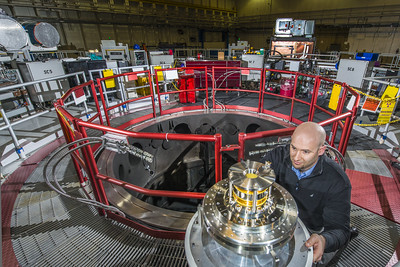
Low density plasmas are predicted to impact Sandia’s Z machine experiments in a variety of ways. Magnetic Resonance Tomography instability development during the target implosion can lead to broad trailing density profiles and potentially redistribute current away from the on-axis stagnation region. Low density phenomenon on Z have been notoriously difficult to model and imaging on Z is challenging due to the lack of optical ports, electromagnetic interference, and mechanical shock. The introduction of optical ports requires careful consideration of the Z debris environment, where shrapnel from the load hardware can puncture optical windows.
To this end, the research team partnered with the National/Regional partner University of Michigan, the Alliance partner University of New Mexico, and Massachusetts Institute of Technology to developed various aspects of a high-resolution fiber imaging system with a compact and versatile design utilizing commercial plastic optical fibers to transmit self-emission images across various distances onto a gated sensor. Bench testing revealed assorted imaging options with different input lenses, ranging from small fields of view (50 µm) with high resolution (3 µm) to large fields of view (45 mm) with reduced resolution (630 µm). The diagnostic, fielded on the Mykonos accelerator, captured visible plasma emission of hybrid x-pinches. Future work includes testing this system on Z, coupling this detector to a laser shadowgraphy system, implementing multi-angle imaging, and developing improved lens configurations for higher resolution imaging.
This fiber-coupled imaging capability will be valuable to many programs on the Z facility and data acquired using these diagnostics will enable benchmarking and validation of state-of-the-art simulation tools presently being developed and will more broadly enable low density measurements (1e17-1e20 electrons/cc) in inertial confinement fusion, high energy density physics, and Dynamic Material Properties platforms with direct relevance to Sandia missions.
Sandia researchers linked to work
- Karin Fulford
- David Alexander Yager-Elorriaga
- Pablo Alejandro Reyes
- Theresa Sandbrook
- Mike Lowinske
- David E. Bliss
- Michael M. Montoya
Sponsored by

Associated Publications
Fulford, K. W., Yager-Elorriaga, D. Fulford, K. W., Yager-Elorriaga, D. A., Patel, S., Montoya, M. M., Chandler, K., & Gilmore, M. A. (2022, October 1). High-resolution fiber imaging for pulsed power experiments. AIP Publishing
Related Content
March 16, 2023